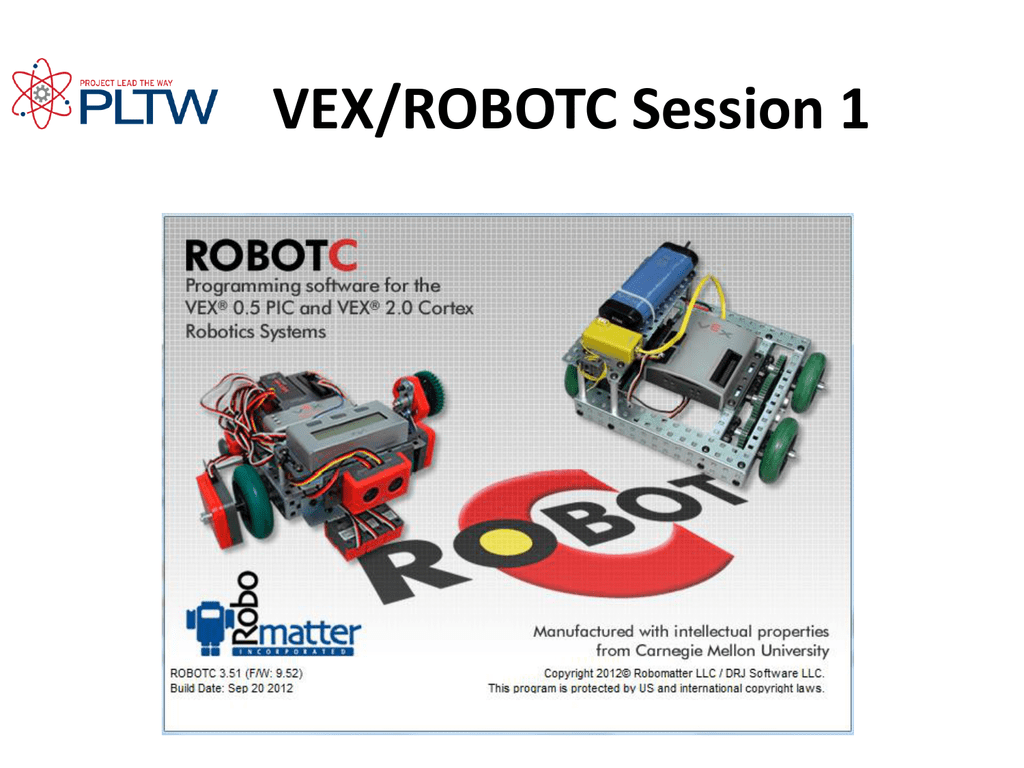
- ROBOTC NATURAL LANGUAGE PLTW HOW TO
- ROBOTC NATURAL LANGUAGE PLTW UPDATE
- ROBOTC NATURAL LANGUAGE PLTW FULL
- ROBOTC NATURAL LANGUAGE PLTW CODE
50 milliseconds will be enough to cover this error :

The way to counter this is to put a delay between the first press release and the second. This is called button debounce, and will make the processor think that you have pressed the button again.

You see, when you press on the button, the start and end of the press will not be “clean” and the processor will register the button like so : This is an error created by the hardware used. This is due to the switch inside of the button. In practice, it will probably not even start the motors, or only work 1 time on 2. In theory this would let you activate the motors when you press a button, and then stop them once again when you press on the button a second time. You will need to add a loop that will wait for you to undress the button before continuing on in the code, like so : This is because you are not fast enough to press the button and undress it in one cpu processing cycle. In theory this looks very nice and looks like it might work, but it will not. this will run for either 10 seconds or when the user presses the button again.Ħ. Now you would want to put a loop that activates inside(nested) of the previous if statement. You now want to activate those motors when the button is pressed, this is how you would do it :ĥ. It checks if the variable or value on the left is equal to the right, and returns true if it is, or false if it is not.Ĥ. The double = means something totally different. A single = means that you are making the left variable equal to the value on the right.
ROBOTC NATURAL LANGUAGE PLTW CODE
The code that you write inside of that if statement will only be executed once the conditional statements have been achieved : Next we will put an if statement that only activates when you press the button. We will now start our program with another infinite loop, so the cortex does not stop reading commands after passing the first iteration.ģ. Here we have our two motors and our button set up:Ģ. Note that all of the #pragma initializations must appear first at the top of your code, with no spaces between them, as the cortex need this to be absolutely first. They will appear at the top with #pragma at the beginning. We will first register our two motors and our button (inside the digital sensors).
ROBOTC NATURAL LANGUAGE PLTW FULL
In the next demonstration, we will write a program that will wait for the user to press a button, then turn two vex motors at full speed for either 10 seconds or until the user presses the button again. This can also be used with the basic joystick and button controls shown earlier to create a more complete program. Most of this logic is shared with most programming languages, and you can refer to tutorials in C to extend your knowledge.
ROBOTC NATURAL LANGUAGE PLTW HOW TO
Next we will see how to program the cortex to follow certain commands in automation. You can then play with the scaling of the joystick to the motor : This is don't by doing this :Īnd there you go, you have associated a joystick command to a motor. The next step would be to just connect your motor port to a joystick. If your program only runs a set of commands to dispense golf balls(such as the 2018 programming competition) or any automation, you will not need an infinite loop.Ģ. The infinite loop is only necessary when you want to use your robot for an indefinite amount of time using the vex controller. This is important when you are using the vex controller, as if you do not have an infinite loop inside of the task main, you will not be able to give it any commands. This means we need a loop that goes on infinitely to keep the cortex working as long as it is on.

You have now set up your programming environment! The next step is to set up the motors and sensors on your robot.ġ.ğirst of all, the cortex executes only what is in the task main brackets, and once it has all been executed, it will end the program. Try and use the same USB port every time you program the robot to avoid unnecessary issues. After that turn it on and plug in back in. Unplug and turn off the Cortex in order to make sure that it’s running the new firmware.
ROBOTC NATURAL LANGUAGE PLTW UPDATE
Do this by accessing Robot>Download Firmware> Automatically update Vex CortexĦ. In order to make sure it will program you need to update the firmware. Plug in the vex cortex you will be programing.ĥ. Access this by going Robot>Platform type>Vex 2.0 CortexĤ. You need to change the platform type of what you are programing to Vex 2.0 Cortex. Access this by going Robot>Platform type>Natural Languageģ. Set the programing to one of your choice between Natural Language PLTW and 2.0.

Settings to change in order to program cortex:ġ.Ĝlick on Window>Menu level>Super User for optimal control of the programming environment.Ģ. Downloading RobotC will require signing up.


 0 kommentar(er)
0 kommentar(er)
